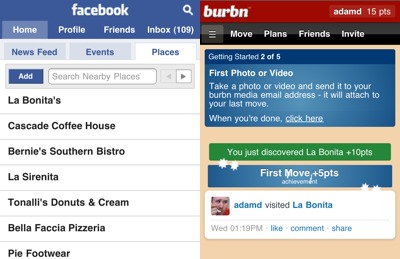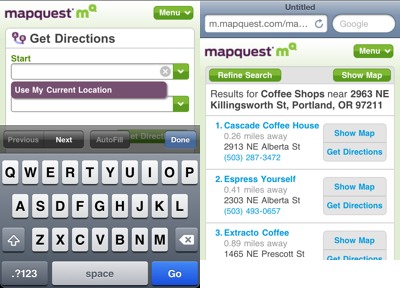
It’s been a year since iPhone added geolocation to its browser. It’s also now available in Android and in many desktop browsers. The standard provides a device’s location to any website through a couple lines of JavaScript. So, why do so few take advantage of data that important?
 There are some who have used it well, of course. Twitter famously activated geo-tweets on its website earlier this year. On either the mobile or desktop browser versions of Twitter, users can choose to associate their location with a tweet.
There are some who have used it well, of course. Twitter famously activated geo-tweets on its website earlier this year. On either the mobile or desktop browser versions of Twitter, users can choose to associate their location with a tweet.
In the hoopla over the Facebook Places launch, it’s easy to miss that Places went live on the mobile web first, then in the iPhone app. It is not yet part of the native Android, Blackberry or Palm apps. But any browser with geolocation? Yep.

Still, there are numerous sites that should really be incorporating location into their websites, starting with the check-in darlings Gowalla and Foursquare. Neither of their mobile sites ask for the user’s location. In fact, Gowalla doesn’t even let you check-in from the web. Compare these to web-only Burbn, which beat both Foursquare and Gowalla in the geolocation time trials.
The Starbucks website still requires typing an address or postal code to find a coffee shop, the local search archetype. The company has an iPhone app that looks up based on your location, but hasn’t added the few lines necessary to do the same in any web browser.
One reason is that there aren’t many examples of how this interaction should take place. Twitter provides one for adding location context, but how about using your location for a search? One good approach comes from perhaps an unlikely place: MapQuest.

The mapping granddaddy’s mobile site (which requires you access it via a mobile phone) offers to use your current location when you click into an input field. From there, you can get get directions or, yes, find coffee shops.
Though the ability to use someone’s location (with permission) is fairly ubiquitous, sites that take advantage of it are not. There is plenty of interest in adding the same functionality to native apps, which are more difficult to build and require longer lead times. Is the cool factor really enough to ignore perhaps the most important web standard in some time? If not, then where are all the location web apps?
Get the TNW newsletter
Get the most important tech news in your inbox each week.





